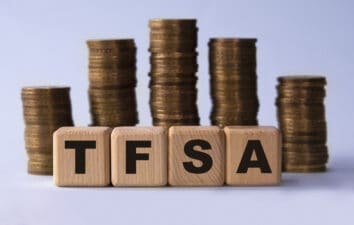Stepping into the world of investing with the aim of crafting a consistent monthly passive income can be enticing.
However, the journey to achieving this goal is not as straightforward as merely cherry-picking a few high-yielding dividend stocks. While these stocks might boast impressive yields, such a narrow focus can lead to an underdiversified portfolio, exposing you to undue risk.
Furthermore, many of these dividend payers distribute their dividends on a quarterly basis, not monthly, leaving gaps in the steady stream of income many investors desire.
In my view, constructing the ultimate passive-income portfolio requires a broader perspective. It should be a well-balanced blend, bringing together various assets to diversify risks and ensure regular monthly payouts.
With a starting capital of $10,000, the path becomes even more strategic. Let’s delve into how a mix of carefully selected exchange-traded funds (ETFs) can help in sculpting this robust passive-income portfolio.
A melting pot of assets
Building a robust income portfolio means looking beyond just dividend stocks. It’s about diversifying across various assets, each with its unique strengths. In addition to dividend stocks, I would personally add the following assets.
Real estate investment trusts (REITs) offer a taste of real estate without the need for direct property ownership. They manage various properties from malls to apartments and are known for distributing a sizable chunk of their income, leading to potentially attractive yields.
Preferred shares sit between stocks and bonds. They grant holders priority when dividends are distributed, typically resulting in higher payouts than common stocks. While their growth might be subdued, their yields often stand out.
Corporate bonds are essentially loans made to companies. In exchange, these companies commit to paying regular interest and returning the principal at the bond’s end. They can offer steady income, often at higher yields than government counterparts.
The beauty of combining these assets lies in diversification. When market conditions affect one asset negatively, another might be flourishing.
It’s about balancing the portfolio, ensuring when one asset faces challenges, another steps up, leading to a steadier income flow and risk management.
My two ETFs of choice
At the foundation of my income portfolio is iShares Canadian Financial Monthly Income ETF (TSX:FIE). What makes FIE an attractive pick is its comprehensive blend.
This ETF holds Canadian bank and insurance company dividend stocks, corporate bonds, and preferred shares. This combination results in an impressive 12-month yield of 7.99%, with the added advantage of monthly payments.
To enhance this foundation, I would add iShares S&P/TSX Capped REIT Index ETF (TSX:XRE). Currently, XRE offers an annualized yield of 5.77%, along with monthly dividend payments. Its an easy way to capture the entire Canadian REIT sector passively.







